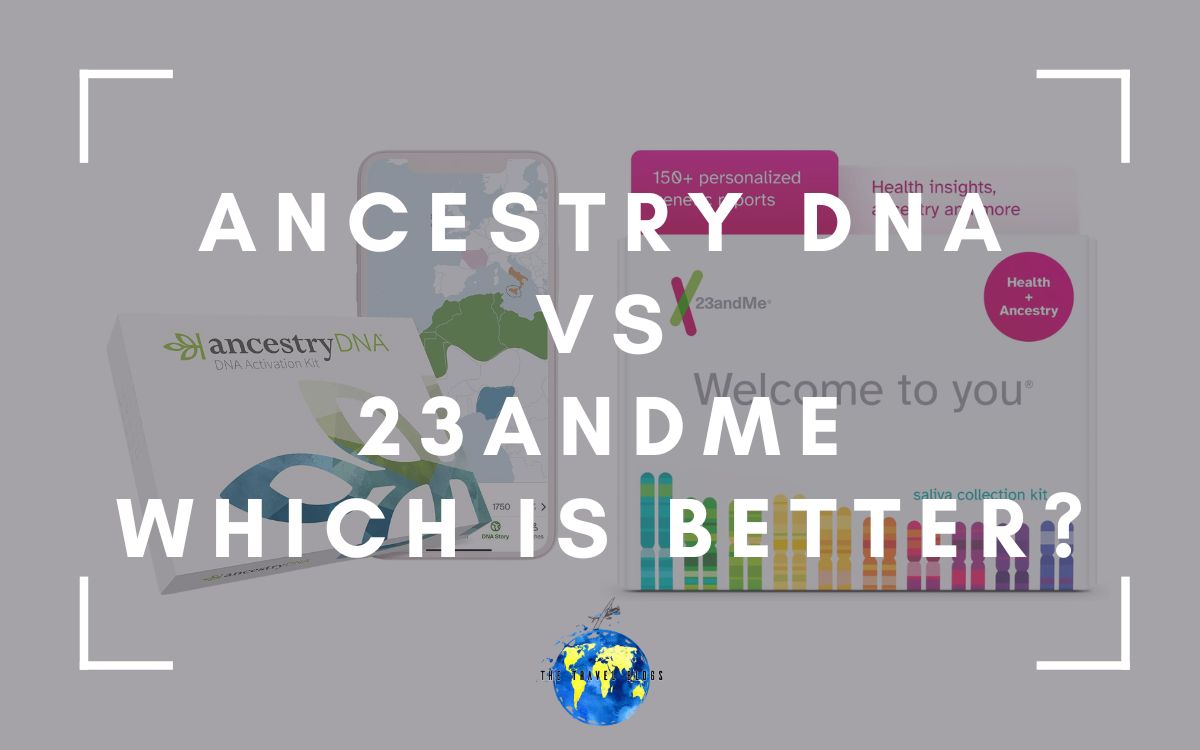Recent years have witnessed a significant increase in individuals eager to uncover their genetic makeup, learning everything from their ancestry timeline to the health predispositions caused by their DNA. Through the simple act of submitting a DNA sample, people can dive beneath the surface of their known family history and discover connections to cultures and communities across the world.
Given the personal significance of the results these DNA testing kits can reveal, you want to know that you are picking the kit best suited to you. Both AncestryDNA and 23andMe boast substantial perks, such as broad DNA databases and constantly evolving research methods, but it is important to learn as much about each service before selecting which one to use.
Coming your way in this post - click to expand ->
Note – Please know, some of the external links on this page are affiliate links, this means that if you purchase after following one, I make a small commission from the sale at no additional cost to yourself.
The quick answer
Whether Ancestry DNA or 23andMe is the better testing kit depends entirely on what you want to achieve from your DNA test. Both services provide accurate ethnicity estimates and can help you trace your ancestry with little difference in price.
If you want to uncover the details of your family history, Ancestry DNA will provide significantly more historical detail and lead you to new branches of your family tree. The results are sourced from one of the largest global databases.
If, however, you want to learn more about your genetic health risks and traits, then 23andMe is the obvious choice. The company is the leader in genetic health research and is constantly expanding both the breadth and depth of information it can offer its clients.
Ancestry dna vs 23andme: DNA testing company backgrounds
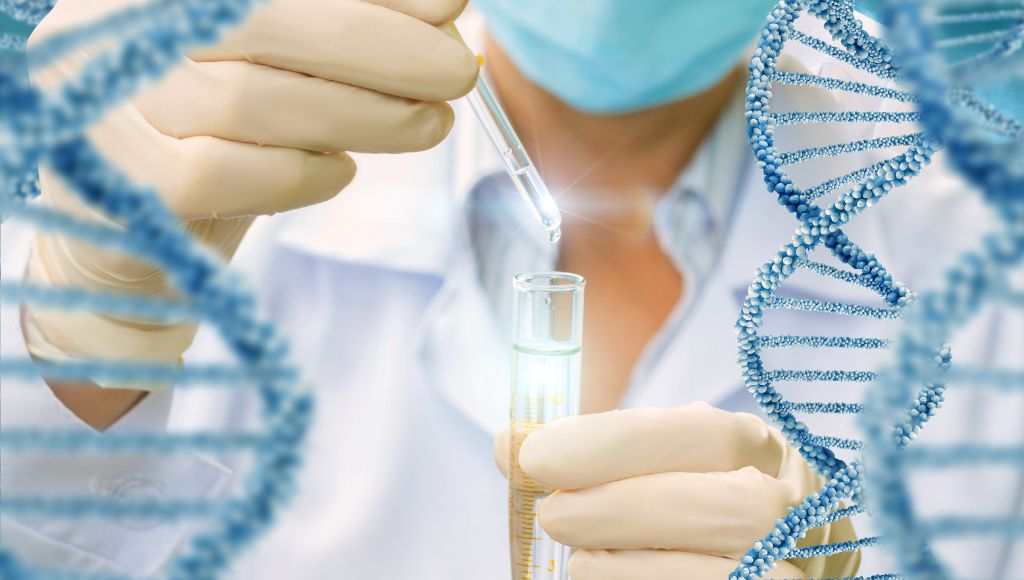
Ancestry DNA is a subsidiary of Ancestry, a global company dedicated to digitizing historical records to aid people in their attempts to map out a detailed family tree and uncover the history of their ancestors. In 2012, Ancestry launched its DNA testing service. This service allowed users to combine historical records with DNA analysis for the first time, offering a deeper insight into their ethnicity.
23andMe has long been a pioneer in DNA testing and was the first company to offer consumers autosomal DNA tests. The company has a distinct focus on uncovering the connection between genetics and individual health, in addition to offering insight into ancestry. Through continuous research and data collection, 23andMe seeks to broaden the understanding of genetic diseases and the connection between genetic traits and certain health risks.
Types of tests
Autosomal DNA Test
An autosomal DNA test will analyze an individual’s maternal and paternal data by examining the non-sexed chromosomes in the sample. It will study 44 out of 46 chromosomes that comprise a person’s genetic makeup. Analyzing these chromosomes can provide ethnicity estimates for both maternal and paternal haplogroups as well as reveal a predisposition for certain health conditions.
yDNA Test
A YDNA test focuses specifically on patrilineal ancestry. By testing the y chromosome, an individual’s paternal haplogroup can be uncovered. This chromosome is passed down between father and son and remains virtually unchanged in the process, meaning that yDNA testing can reveal generations of a family’s history. Given that it focuses on the y chromosome, only biological males can take this type of DNA test.
mtDNA Test
Unlike yDNA testing, all genders can take an mtDNA test because mothers pass their mitochondria to all of their children. As such, mtDNA testing can uncover up to 50 generations of an individual’s matrilineal lineage because mitochondrial DNA remains the same.
Product overviews
Ancestry DNA

Ancestry DNA provides several different testing services. The cheapest and most popular service is the original Ancestry DNA package, which uses autosomal DNA testing to uncover DNA matches with certain regions.
For a slightly higher price, users can combine their DNA data with Ancestry’s ever-expanding historical database, allowing people to trace their results through a family tree and map the chronology that comprises their genetic makeup. The most expensive kit offered by Ancestry DNA includes all of the above in addition to an analysis of genetic traits.
Ancestry has a global database that is regularly updated with newly discovered records, including censuses, birth, marriage, and death certificates, in addition to newspapers and public journals. This enables people to uncover both their genetic roots and detailed information about their ancestors’ way of life.
However, for users more interested in a DNA health test, Ancestry DNA provides little information on the correlation between DNA matches and personal health.
23andMe

23andMe boasts the most detailed genealogical database. Their autosomal DNA tests can reveal ties to over 2,000 global locations, and can even identify the specific county an individual’s ancestors originated from.
While there is a reduced focus on generating a family tree, a user’s results will generate an ancestry timeline that showcases which generation certain DNA matches come from. The basic package offered by 23andMe includes relative matches and ancestry traits, such as a predisposition for photobleaching or freckles.
A more expensive testing kit includes health, carrier, and wellness reports. These test results can reveal the likelihood of a person developing certain health conditions, such as diabetes, as well as analyze physical traits, including muscle composition and weight distribution. 23andMe is the only testing company to currently offer such detailed health reports.
The next price bracket includes a membership to 23andMe that lets users track their health and receive updated research findings.
Let’s take a closer look
How does 23andMe work?
After purchasing one of 23andMe’s DNA testing kits, users will need to provide a spit sample and register their kit online. The sample will then be tested using a process called genotyping, which allows genealogists to find DNA matches from over 2,000 different locations.
23andMe boasts the ability to identify a DNA match down to 0.1%, providing an incredibly detailed overview of an individual’s ancestry. These results are subsequently uploaded to the registered account, allowing users to uncover their ethnicity estimates as well as information about the regions their ancestors originate from.
In addition to identifying ancestry, 23andMe also uses genotyping to uncover genetic variants which contribute to certain traits. These traits include everything from hair texture and balding to motion sickness and a fear of heights.
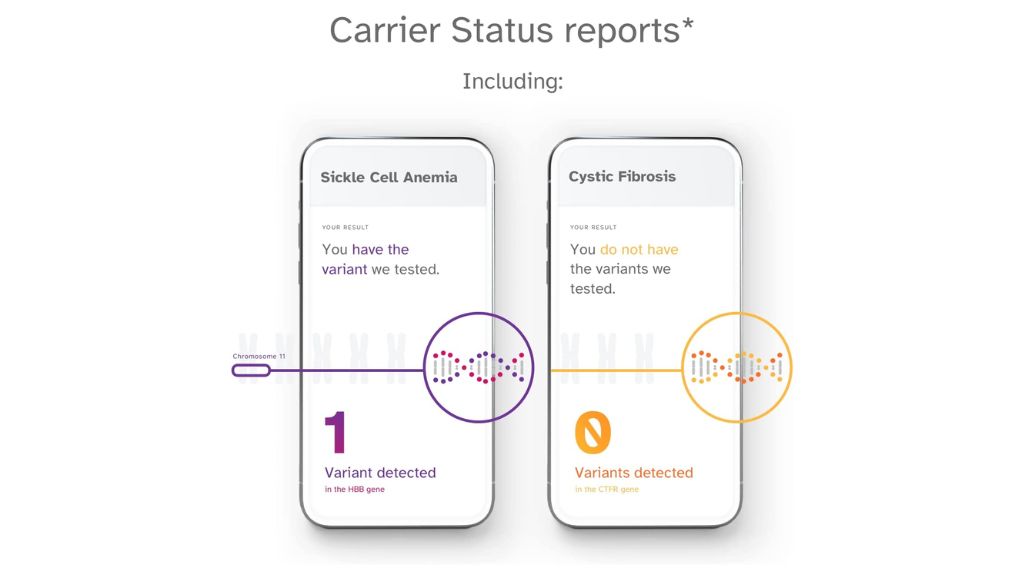
How does Ancestry DNA work?
Users must follow a similar process with the Ancestry DNA testing service. They must supply a saliva sample in a saliva collection tube and register an account with Ancestry. Using autosomal DNA testing to trace both maternal and paternal lines, the researchers at Ancestry can then compare the markers in a person’s DNA against a reference panel.
This panel is curated with DNA samples from individuals with deep ancestral ties to a specific region. If the sample shares markers with those in the database, it is highly likely that their ancestors originated from the same region. This forms the basis of the ethnicity estimate provided by the service.
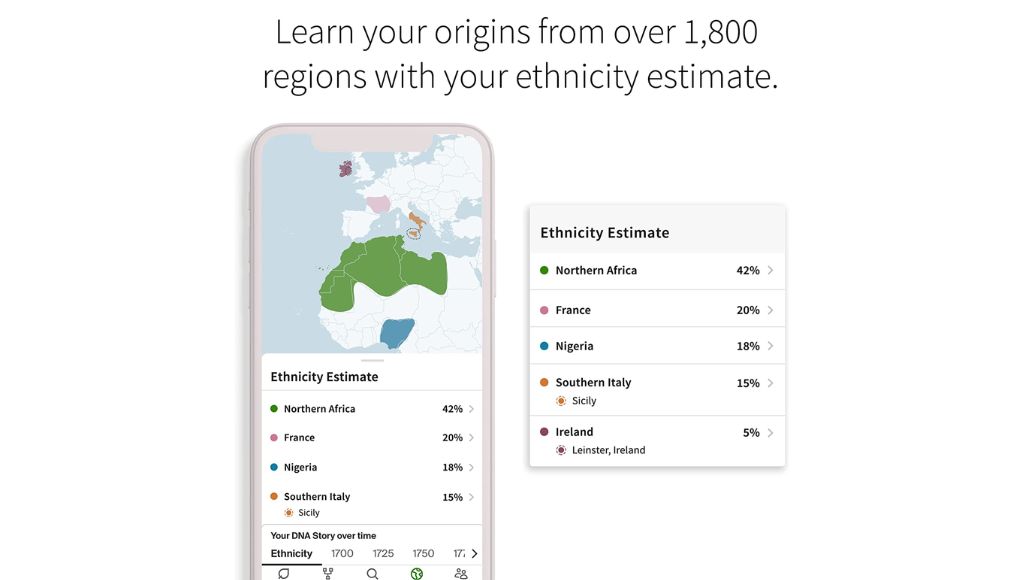
Side by side comparison
Ethnicity estimate/results
Both DNA testing companies can provide users with an ethnicity estimate that can trace their ethnic heritage to specific regions and periods of history. The databases used by each company, however, differ significantly. Ancestry’s database covers approximately 1,800 different regions, including Oceania, Europe, and Africa.
By contrast, 23andMe provides ethnicity estimates comprising results from two different databases. The first database uses 47 reference populations to uncover ancestral lines that date back hundreds of years. A further database comprised reference samples from over 2,000 regions, with these results detailing an individual’s more recent genetic history.
Both companies may also include unknown ancestry in their estimates because not enough is currently known about certain genetic markers. As more people participate in these tests, additional genetic information is revealed and the results become more accurate.
DNA relatives/matches
DNA tests can allow people to identify their DNA relatives by matching certain results with those of other users. On Ancestry, users can discover either matches or shared matches with other people, revealing relatives as well as defining the relation. Users on Ancestry can see which matches they share with relations as distant as fourth cousins.
23andMe offers both ‘Relatives in Common’ and ‘Shared DNA’ options to help users trace their family tree. People with an identical DNA segment are likely to share a common ancestor, with the ‘DNA Relatives’ feature providing an estimate of what the relation between two users might be. Users can then narrow down specific lineages and regions they have in common.
Both companies require users to consent to their personal DNA results being shared in order for them to access these services and advise people to be careful when sharing private information online.
DNA Traits
The trait analysis offered by each company only differs marginally. Both tests can reveal approximately 35 different genetic traits that are visible, such as eye color and iris pattern, and internal, such as nutrition levels and taste preferences. The major difference is that trait analysis forms part of the basic package offered by 23andMe, whereas users will have to pay for the premium package on Ancestry to receive these results.
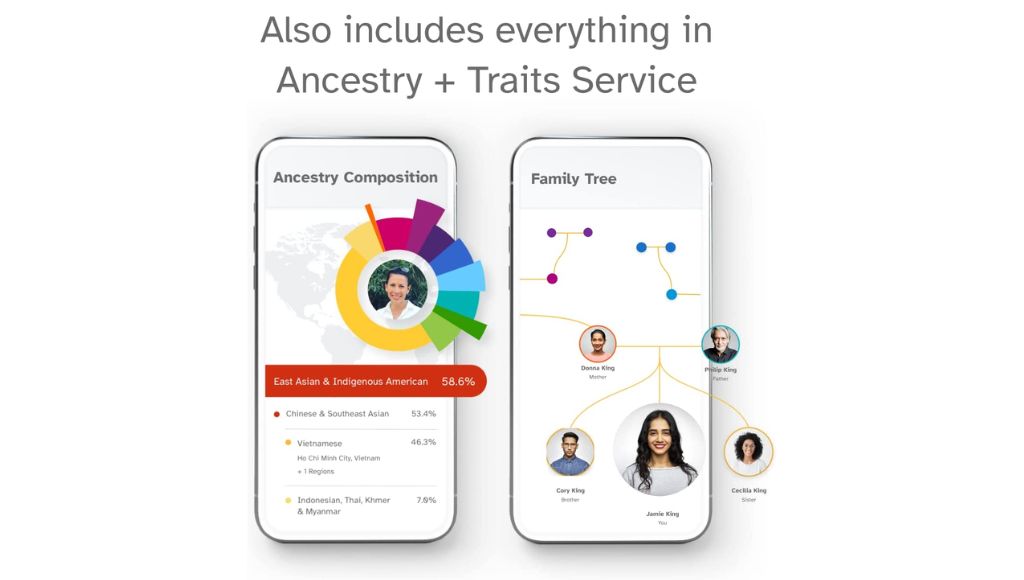
Key differences
Detailed genealogy vs detailed family history
23andMe has a more detailed database, comprising two different types of genealogical data which includes both reference populations and DNA data from 2,000 regions across the world. This provides users with an accurate and detailed breakdown of their genealogy.
While Ancestry’s database is smaller, featuring genetic data from 1,800 regions, there is a stronger focus on delivering users a thorough analysis of their family’s chronology. This is due to the company’s expansive historical database which is built upon censuses, medical and military records, as well as countless family trees.
Number of people in their respective databases
The databases belonging to each company are continuously growing as more people participate in DNA testing. Currently, 23andMe has a database populated by approximately 12 million users. Ancestry DNA reports to have generated a database of data from over 15 million users.
Number of geographical regions covered
The 2,000 regions covered by 23andMe include Europe, Central and South Asia, Menelasia, Indigenous America, Sub-Saharan Africa, East Asia, and West Asia and North Africa.
Ancestry DNA’s 1,800 regions include Africa, America, Europe, Asia, Oceania, and West Asia. Each continent is divided into specific regions with its own genetic markers.
DNA trait reports
The trait reports included in each service cover approximately 35 different health and wellness traits. The distinction between the companies is that Ancestry only offers a trait report as part of its premium package. Users can compare their traits with other people who share similar ancestry to see how they differentiate.
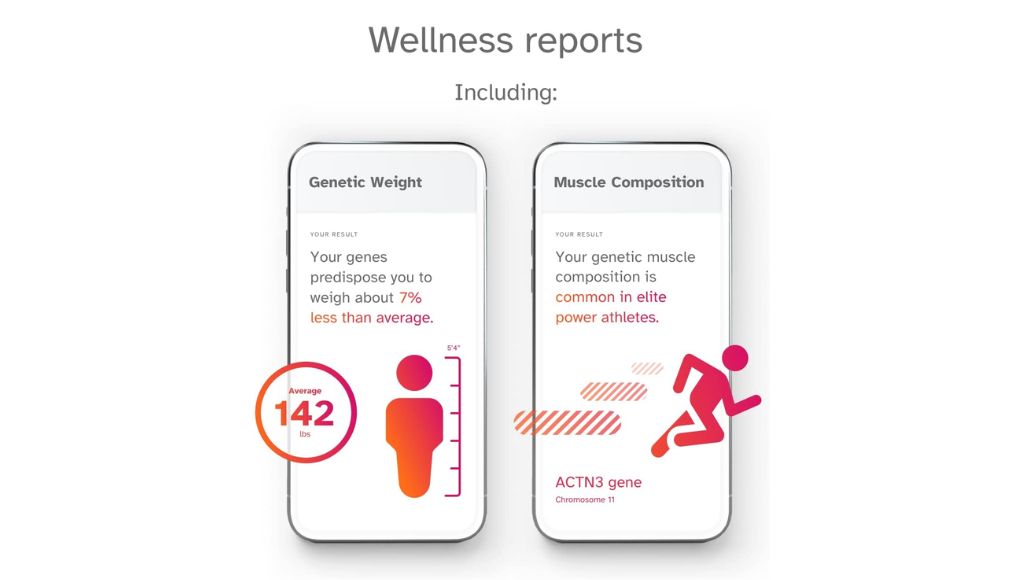
DNA health reports
Ancestry no longer offers DNA health testing as part of its service, choosing instead to focus on heritage and family history.
For users who select the premium package, 23andMe can provide a detailed health report. This report includes medical predispositions, such as the likelihood of developing diabetes or breast cancer, and can identify if a user is a genetic carrier for certain conditions such as kidney disease and cystic fibrosis.
23andMe vs Ancestry DNA for ethnicity estimation and ancestry test
Given its larger database and broader regional cover, 23andMe is better suited to customers eager to uncover the specific details of their ancestry. Using a DNA test kit from 23andMe can reveal an individual’s ancestry down to 0.1%.
23andMe vs Ancestry DNA for family history information
By combining DNA testing with historical documents, Ancestry DNA provides far more accurate and detailed information about family history. Rather than simply identifying which generation certain genetic markers originated from, Ancestry allows users to construct a family tree to chart marriages, deaths, and migration patterns across time.
23andMe vs Ancestry DNA for health information
23andMe is the leader in the industry for DNA health testing. Research initiatives are constantly revealing the connection between genetic traits and health conditions. Users eager to uncover biomedical data are going to be the most satisfied with 23andMe.
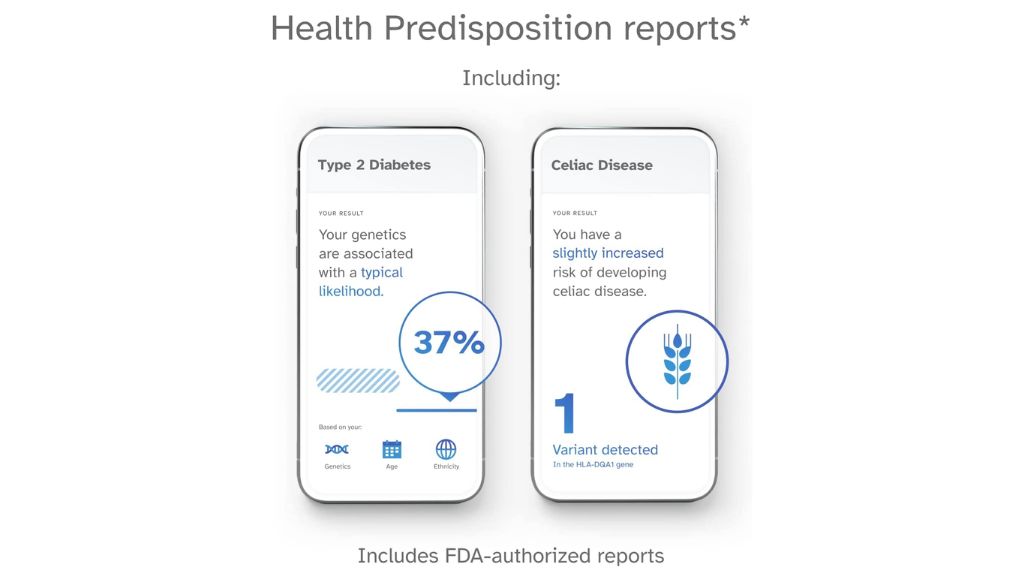
FAQs
How long do DNA tests take?
Upon receiving the sample, it typically takes companies 3-4 weeks to upload the DNA results to a user’s account.
Is AncestryDNA or 23andMe more accurate?
With a larger database, 23andMe can offer more detailed results, however, both services are equal in their accuracy levels.
Which DNA test is most accurate for ethnicity?
23andMe has a bigger data pool, meaning it can identify the specifics of an individual’s ethnicity. The company claims to be able to identify ethnicity down to 0.1%.
Does 23andMe have the same results as Ancestry?
Both testing kits will offer similar ethnicity estimates, however, 23andMe will also provide health and wellness reports.
Is it safe to take a DNA test?
Each company offers several privacy options so individual results and private information remains confidential.
Final thoughts
The DNA testing service best suited to you largely depends on what you seek to gain from taking the test. If you are interested in uncovering your family tree and finding relatives, AncestryDNA is the better service. It provides detailed genetic results rooted in historic sources.
By contrast, if you want to discover your ancestry in addition to how your DNA affects your health and well-being, then 23andMe is more suited to you. The company is regularly making breakthroughs in the connections between DNA and health and currently offers the most detailed results on the market.
